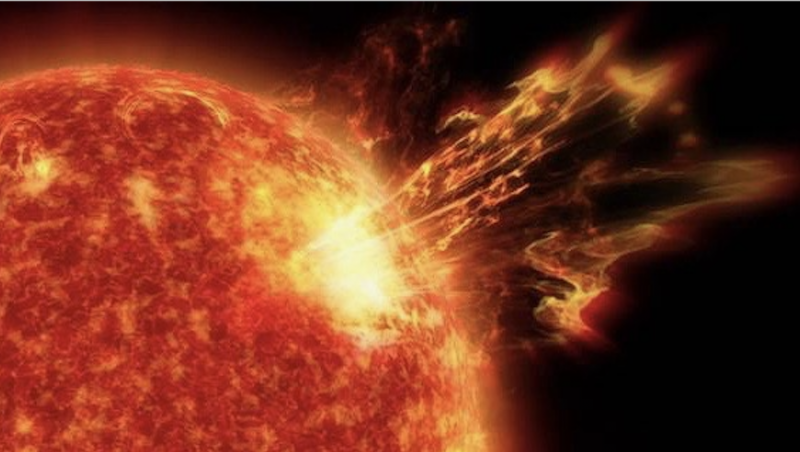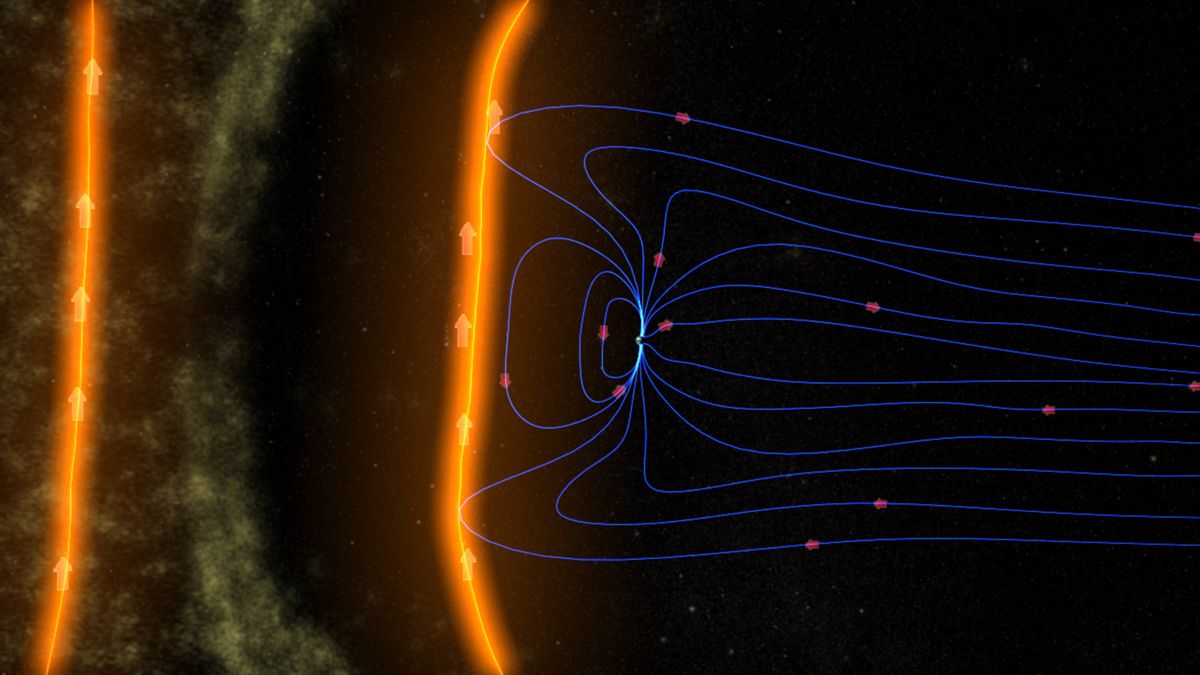
A new joint study by the University of Warwick and the British Antarctic Survey used historical data to extend scientists’ previous estimates of the likelihood of space super-storms. These storms may originate with solar flares, seen to erupt explosively on the sun during years of high solar activity. Space super-storms aren’t harmful to humans, because our atmosphere protects us, but they can be hugely disruptive to our modern technologies. They can cause power blackouts, take out satellites, disrupt aviation and cause temporary loss of GPS signals and radio communications, scientists say. The new work shows that what the scientists called “severe” space super-storms occurred 42 years out of the last 150 years. What they called “great” super-storms occurred in 6 years out of 150. The new work also sheds light on what’s called the Carrington event of 1859, the largest super-storm in recorded history.
The new work is based on an analysis of magnetic field records at opposite ends of the Earth (U.K. and Australia). It was published January 22, 2020 in Geophysical Research Letters. A statement from the University of Warwick on January 29, 2020, explained:
This result was made possible by a new way of analyzing historical data … from the last 14 solar cycles, way before the space age began in 1957, instead of the last five solar cycles currently used.
The study doesn’t mean that there is one “great” space super-storm exactly every 25 years. Instead, it tells you the likelihood of a powerful storm occurring any given year. As the new paper’s summary pointed out:
We find that on average there is a 4% chance of at least one … severe storm per year, and a 0.7% chance of a Carrington class storm per year …
That’s a relatively high estimate, higher than was previously thought. Lead author Sandra Chapman of the University of Warwick commented:
These super-storms are rare events but estimating their chance of occurrence is an important part of planning the level of mitigation needed to protect critical national infrastructure.
The Carrington storm of 1859 – often called the Carrington event – is the biggest space super-storm we know about. It’s the one everyone talks about when speaking of the potential threat from these storms. It happened 161 years ago and so fell outside the date range of this study; however, the new analysis does estimate what amplitude it would need to have been to be in the same class as the other super-storms that were included the study. For purposes of this study, the Carrington storm is considered a “great” storm.
A more recent example of a space super-storm – in this case a “severe” storm as defined by this study – would be the one of March 1989. It caused a nine-hour outage of Hydro-Québec’s electricity transmission system.
In 2012, the Earth narrowly avoided trouble when a coronal mass ejection – a powerful eruption near the sun’s surface that often goes hand-in-hand with solar flares – traveled across space from the sun, barely missing the Earth. According to satellite measurements, if it had hit the Earth, it would have caused a super-storm.
Richard Horne, who leads Space Weather at the British Antarctic Survey and who was a co-author on this study, commented:
Our research shows that a super-storm can happen more often than we thought. Don’t be misled by the stats, it can happen any time, we simply don’t know when and right now we can’t predict when.
Here’s more from the scientists’ statement about space super-storms:
Space weather is driven by activity from the sun. Smaller scale storms are common, but occasionally larger storms occur that can have a significant impact.
One way to monitor this space weather is by observing changes in the magnetic field at the earth’s surface. High quality observations at multiple stations have been available since the beginning of the space age (1957). The sun has an approximately 11-year cycle of activity which varies in intensity and this data, which has been extensively studied, covers only five cycles of solar activity.
If we want a better estimate of the chance of occurrence of the largest space storms over many solar cycles, we need to go back further in time. The aa geomagnetic index is derived from two stations at opposite ends of the earth (in U.K. and Australia) to cancel out the Earth’s own background field. This goes back over 14 solar cycles or 150 years, but has poor resolution.
Using annual averages of the top few percent of the aa index the researchers found that a ‘severe’ super-storm occurred in 42 years out of 150 (28%), while a ‘great’ super-storm occurred in 6 years out of 150 (4%) or once in every 25 years.

Bottom line: Scientists used magnetic field data to extend estimates for the frequency of space super-storms back 150 years.











